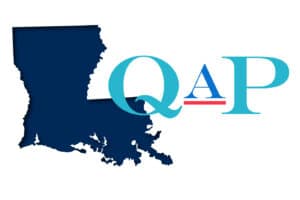The California Tax Credit Allocation Committee (TCAC) and the California Debt Limit Allocation Committee (CDLAC) Executive Directors Mark Stivers and Jeree Glasser-Hedrick recently assembled a task force to discuss high cost housing projects. Representatives were sought from the California Housing Consortium, California Council for Affordable Housing, NPH, SCANPH, the California Coalition for Rural Housing, and the San Diego Housing Federation. Invitees also included government representatives, state housing partners, and a few at large members. While the task force provided valuable ideas and feedback, Mr. Stivers and Mr. Glasser-Hedrick note that they take sole responsibility for the eight ideas provided in a recently released memo. Items 1 and 2 will be pursued administratively while 3-8 will be proposed regulation changes with opportunity for public comment.
- Improve Accounting/Reporting to Reflect True Costs for 4% Deals.
Omit the value of donated land and improvements, fee waivers, and other donated costs excluded from basis from the sources and use budget for 4% projects. This imaginary number is calculated in 9% deals for the tiebreaker but serves no purpose for 4% deals. This will allow for truer cost reporting.
- Staff reports will now include a project’s lifetime rent benefit, putting cost data into the context of public benefit.
- Limit Bond Allocations per unit.
Limit CDLAC bond allocation on a per unit basis (adjusted by the number of bedrooms) in the General and Rural Multifamily Pools as follows:
| Studio and SRO: | $382,500 |
| One-bedroom: | $400,000 |
| Two-bedroom: | $427,500 |
| Three-bedroom: | $472,500 |
| Four or more bedroom: | $497,500 |
Because bonds must finance at least 50% of aggregate basis (land plus depreciable assets), the effective limit on costs would be twice the figures listed above.
- Developer fee incentive on 9% new construction deals.
First raise the base cash out developer fee limit on 9% new construction projects to $2.2 million. Then apply the incentive such that the cash out fee equals the base cash out fee (15% of basis or $2.2 million) plus or minus a 1% increase/decrease to the base cash out fee for each 1% that the high-cost test (eligible basis/threshold basis limit) is below/above 100%. For example, a project that has a high-cost percentage of 90% would have a cash out developer fee limit of 16.5% of basis or $2.42 million. A project with a high-cost test of 120% would have a cash out developer fee limit of 12% or $1.76 million. TCAC is also considering methods for accommodating high-cost areas of opportunity.
- Eliminate High Cost Projects from Competitive Round.
Projects with a high-cost test percentage greater than 130%would be unable to proceed in competitive tax credit rounds. A similar accommodation as mentioned in 4 above for high-cost areas would be instituted.
- Allow for smaller sized units.
Reduce minimum unit size for 1 and 2 BR units by 50 square feet and by 100 square feet for 3 and 4 BR units.
- Allow rehab projects to seek waivers to the minimum size requirement for community space where community space already exists.
- Disallow basis for exceeding parking space ratio standards.
Now that AB 744 has generally trumped local parking requirements for certain types of projects, this would effectively require local governments to pay for any increased parking if they conduct a study to evade the AB 744 standards.


